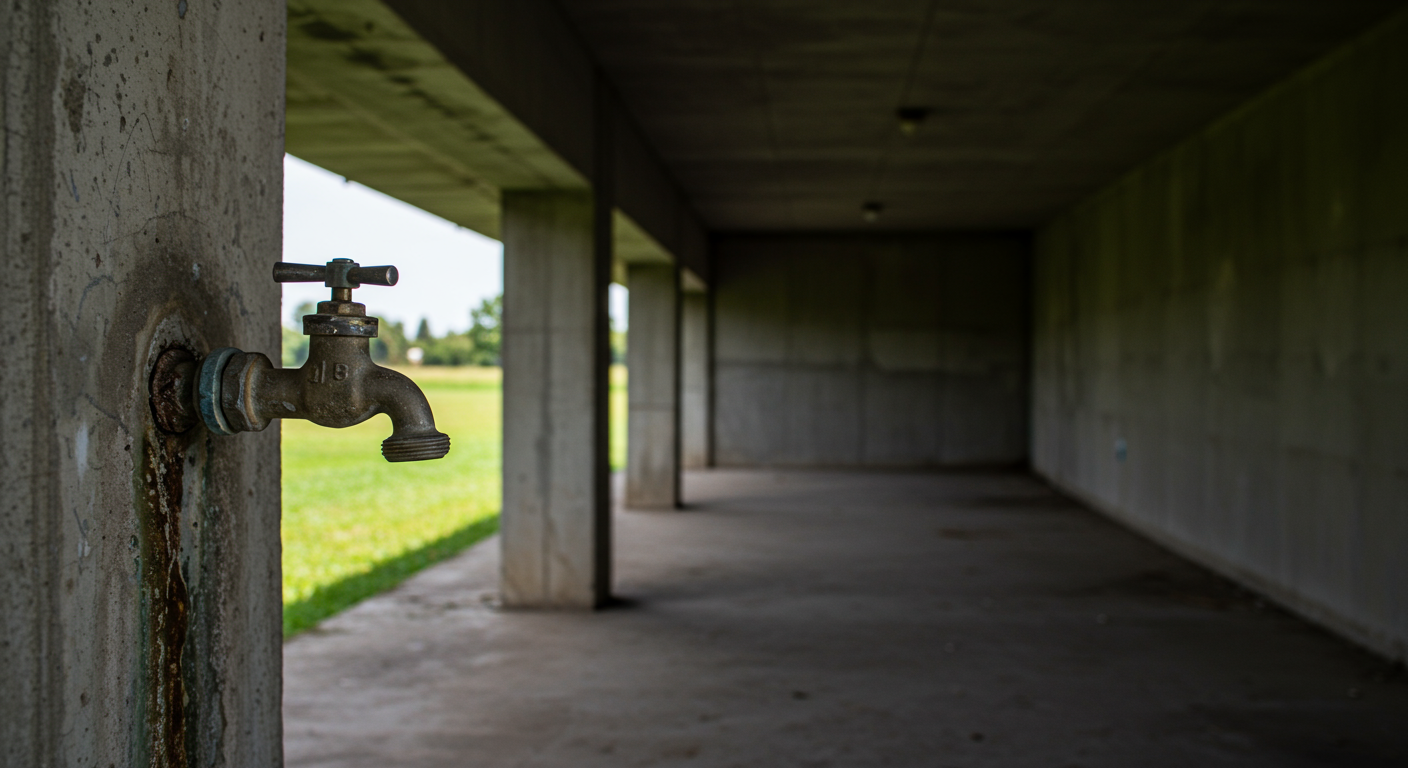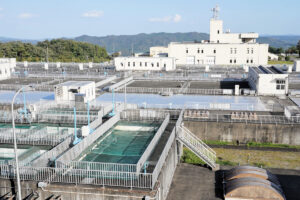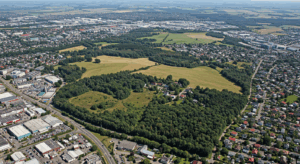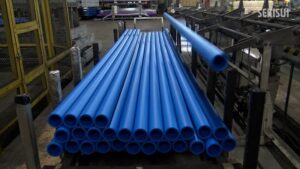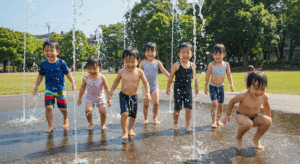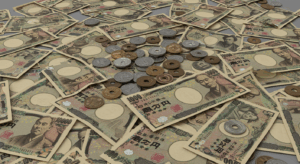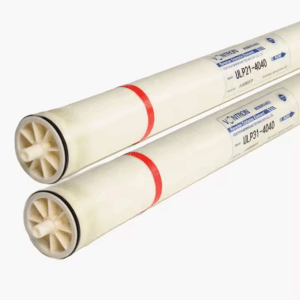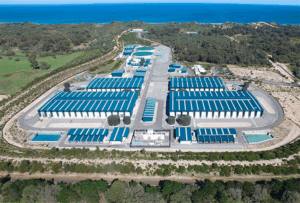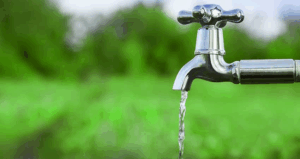With a coverage rate of 98%, Japan’s water supply system has grown impressively—always adapting to meet demand. But now, as circumstances shift, the very nature of that demand is changing dramatically.
Japan’s water supply system has developed remarkably over the decades, growing in step with the needs of its people. But as times change, so too does the environment—and with it, the very definition of “need” is shifting dramatically.
Today, Japan’s water infrastructure stands at a pivotal crossroads, facing challenges unlike any before.
In this series, we’ll take a closer look at the future of Japan’s water systems as they navigate this critical period of transformation.
The Golden Era: A Century of Expansion Aligned with the Nation’s Needs
It’s been about 100 years since Japan’s modern water supply system began. That century can rightly be called a golden era—marked by a repeated cycle of challenges, development, and successful adaptation.
As Japan’s population grew, so did the reach of its water services. From the 1920s to 2020, the number of people served by the water supply increased steadily, as shown by population coverage graphs that climb upward decade after decade.
The postwar economic boom accelerated this growth dramatically. Rapid urbanization and population concentration led to the widespread adoption of rapid sand filtration systems, the installation of large-diameter pipes, and a surge in dam construction. These efforts pushed water supply coverage to 98%—a remarkable achievement by global standards.
Today, Japan boasts a leakage rate of just 5% and consistently high-quality tap water. These milestones are not just national accomplishments—they stand as achievements the world can admire in Japan’s water infrastructure history.
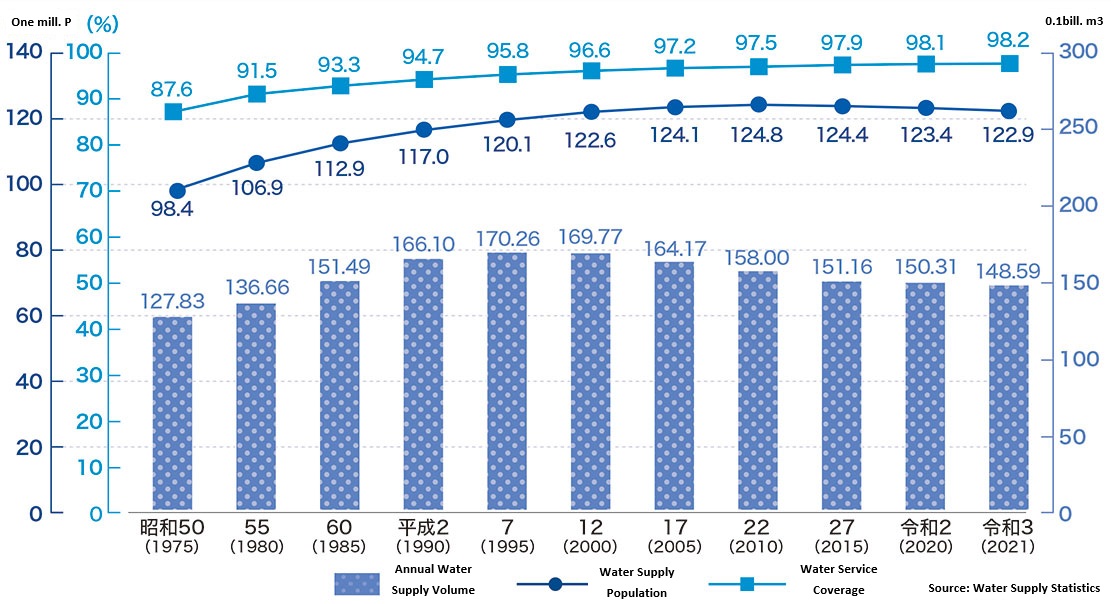
The Paradigm Has Shifted — Three Turning Points in the Numbers
However, the assumptions that once supported Japan’s highly successful water model are now undergoing a major shift.
The numbers clearly show that Japan’s water systems have entered a new paradigm—one that began when the country’s population growth slowed and ultimately reversed.
📉 Population and Water Demand Have Peaked
Japan’s water supply population peaked in 2010, while total supplied volume actually hit its high in 1994. Over the past 30 years, per capita water usage has declined by nearly 30%.
🧯 Aging Infrastructure on the Rise
Out of Japan’s approximately 670,000 kilometers of water pipelines, about 20%—or 130,000 kilometers—had already exceeded their legal service life of 40 years as of FY2020.
🌧️ Climate Change and the Era of Frequent Disasters
Due to climate change, Japan is now facing increasingly frequent and severe water-related disasters—from record-breaking rainfall caused by linear rainbands to prolonged droughts.
Together, these sharp statistical shifts reveal a critical truth: the former paradigm of “population growth = increased water demand” is no longer valid. To sustain future services, Japan must rethink the very structure and purpose of its water supply systems.Together, these sharp statistical shifts reveal a critical truth: the former paradigm of “population growth = increased water demand” is no longer valid. To sustain future services, Japan must rethink the very structure and purpose of its water supply systems.
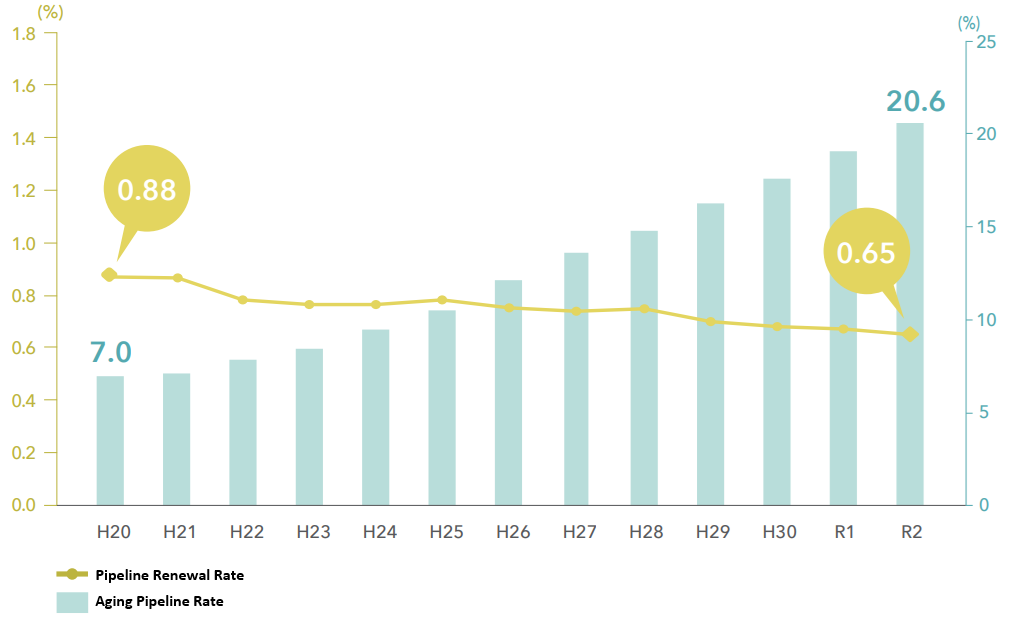
When Mismatches Lead to Trouble — And It’s Starting to Show
There is a growing mismatch between Japan’s traditional water infrastructure—built on the assumption of constant population growth—and today’s reality of a shrinking and changing society. This disconnect is now leading to visible and serious problems.
💧Rising Incidents of Leaks and Water Outages
As aging pipelines and deteriorating facilities reach the end of their life spans, Japan is seeing over 100,000 water outage incidents per year. Over the past two decades, the rate of such incidents has increased by 30%.
For example, Kitakyushu City in Fukuoka Prefecture recently experienced a major pipe rupture, while Atami City in Shizuoka faced a prolonged water outage affecting wide areas.
💸A Growing Gap Between Renewal Costs and Revenue
Replacing aging water mains is estimated to cost 1 trillion yen annually. Meanwhile, declining water consumption—driven by population decline and improved efficiency—has led to a steady drop in water fee revenue. This financial gap is widening year by year.
These trends signal the limits of a water system designed for an era of expansion. Japan must now urgently transition to a new strategy—one tailored to the realities of declining population and changing water demand.
Hope Ahead — Rethinking the Problem Unlocks the Solution
The challenges facing Japan’s water systems are not insurmountable.
Perhaps the real issue is that we simply haven’t recognized the shift: from an era of population growth to one of steady decline. Once we acknowledge this transition, rethinking how we approach water services may be difficult—but it’s fundamentally a matter of perspective.
And with a new perspective comes possibility.
Here are just a few of the many ideas already emerging:
🏙️ Redefining Urban and Suburban Water Systems
We can begin separating water supply strategies between urban centers and surrounding areas, tailoring systems to the specific needs and characteristics of each region.
💧 Reducing CAPEX and OPEX Through Low-Cost Technologies
By adopting simpler treatment systems—like gravel or sand filtration—or decentralized technologies such as MF/UF membranes, we can significantly lower both capital investment (CAPEX) and ongoing operational costs (OPEX).
🛠️ Lowering OPEX with Smarter Management Models
Combining basic daily maintenance by local residents with digital remote monitoring can reduce management costs while still maintaining system safety and reliability.
These ideas aren’t pipe dreams.
By shifting our mindset and taking concrete action, Japan can begin to build a new era in water service—one that meets the realities of today while looking boldly toward the next 100 years.
Summary & What’s Next
For the past century, Japan’s water infrastructure has expanded steadily—laying pipes, building plants, and reaching ever more people as the population grew.
But that era has come to an end.
Now, in the age of population decline, the focus must shift: toward right-sizing our water systems, redistributing supply more appropriately, and reducing costs without compromising quality. If we can take these steps, there’s no reason why Japan’s water services can’t thrive for the next 100 years—evolving into something even better suited to our changing world.
This series aims to spark awareness, encourage dialogue, and invite readers like you to see water infrastructure not as someone else’s issue—but as a shared concern and a collective responsibility.
▶︎ Up Next: Episode #2 — The Pipe Shock & Redefining Service Areas
Explore how aging pipelines and mismatched service zones are pushing Japan toward a critical rethink in how—and where—we deliver water.
